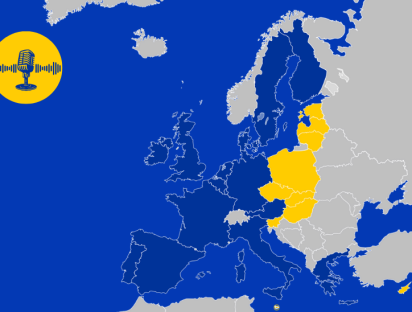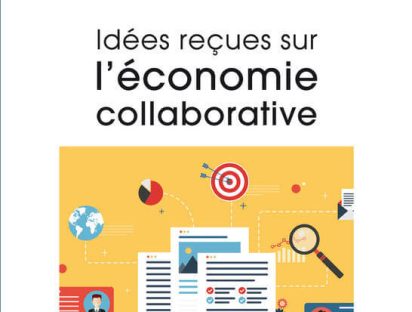Genius Loci and Emerging Sustainable Fashion Strategies
Two Significant Case-Histories in Italy and Tunisia
At a time when uncertainty about trends and changes in emerging markets have rang alarm bells about changing business models, the interaction between small and medium-sized enterprises (SMEs) and large global brands appears as a strategic nest for the fashion industry’s luxury portfolio. The growing interest in sustainable fashion manufacturing is the opportunity to strengthen the identity of place and know-how, repositioning SMEs as centers and cradles of value rather than as mere producers.
The article “Genius Loci and Emerging Sustainable Fashion Strategies”, by Gabriele Goretti and Sonia Chikh M’hamed brings to light the strong link between craftsmanship and sustainability in the fashion industry through two case studies ‘Made in’ the borders of the Mediterranean Sea.
Mediterranean local fashion: two case studies
The first case study is that of Prato, an Italian city, active in textile manufacturing since the Middle Ages and known for its wool regeneration and textile recycling. It illustrates the relevance of craftsmanship and its essential position in a sustainable fashion industry. Indeed, the reprocessing of used products, which are then reused for making fashion collections, is carried out with traditional techniques, in this way reducing pollution and promoting zero-waste management.
The second case-history is about Azalée, a Tunisian fashion brand that designs and produces items using natural materials and traditions related to the art of palm frond making. The study of this emerging brand highlights the relationship that can exist between traditional know-how and innovative design. Moreover, it shows how partnerships between companies in the fashion industry can lead to great achievements and send a powerful message.
The fragmentation of the manufacturing process has underlined the importance of craftsmanship as a key industry asset. Furthermore, the development of digital marketing and e-commerce, spurred on by the digitization of the economy and the changing lifestyles of customers, makes it a core value in the fashion industry.
Questions to Sonia Chikh M’hamed and Gabriele Goretti:
1. How does this study fit in with your background and current research interests? How did you come up with this research project?
Sonia: Sustainability, in its various fields and interrelated levels of analysis, is one of my research interests. More specifically, in relation to this study, as a professor of strategy in the EU-ASIA Luxury Marketing M.Sc. program since 2018, I have discussed sustainability issues and challenges in the luxury sector in my lessons. One of the major challenges that luxury companies are facing today is how to integrate sustainability effectively and entirely in their business models. Gabriele is also teaching in the same programme, and we have been talking about how to collaborate on this topic. Besides, the Azalée case study wouldn’t be feasible without the support of its founder, Amira Derouiche, who has provided materials, including an interview in September 2021.
Gabriele: My research focuses on design innovation and craftsmanship-based processes in the fashion and furniture supply chain. I had been working for several years in Italy, where ‘made in Italy’ SME clusters operate as an open platform for Italian, French and other international brands. The strength of the ‘Made in Italy’ model implies advanced craftsmanship values, connecting technological innovation and the traditional savoir-faire of artisanship. This integration of ‘ancient’ practices and contemporary innovation stands as a strategic platform in developing and highlighting manufacturing values as social and eco sustainability. In fact, in the district of Prato, by reinterpreting ‘historical’ wool regeneration processes through advanced technologies, it was possible to develop new sustainable products for contemporary fashion.
2. Could you tell us what PAD is about, and how it came to be published in this issue?
Sonia: PAD. Pages on Arts and Design, is an international, peer-reviewed (double-blind), open-access, online journal published twice a year (since 2018). The journal is identified by the International Standard Serial Number (ISSN) 1972-7887 and recognised by the ADI Index and the ANVUR, the Italian Agency of the University System and Research Assessment (further details at: https://www.padjournal.net/new/).
Gabriele: I have known about the PAD journal since 2017 when I was working as a researcher in Italy at the University of Florence and as Fashion Department coordinator at the IED Istituto Europeo di Design in Florence. Through my academic network, I became aware of the work done by PAD, a journal that is progressively acquiring a very good reputation within Italian faculties in fashion and design. Considering that there are not many international fashion journals dealing with the fashion supply-chain, and considering PAD’s mission and previous issues, I realized that this academic journal could be interested in focusing on sustainability and the point of view of Sonia’s and my research.
3. Could you give us some information about your co-author and how you organized working with him on the article?
Sonia: Gabriele Goretti is an associate professor at Jiangnan University in Wuxi (China) and he is also Adjunct Professor at ESSCA, Shanghai. We have been collaborating since 2018 on different topics. Gabriele suggested contributing to PAD’s issue 21 on ‘Design Values in the Mediterranean’ following our discussions on the topic of sustainability in the luxury sector.

Bibliography
Gabriele Goretti & Sonia Chikh M’hamed, Genius Loci and Emerging Sustainable Fashion Strategies. Two Significant Case-Histories in Italy and Tunisia, Pages on Arts and Design Journal, n°21 – 2021 DECEMBER – VOL 14 – Design Values in the Mediterranean





